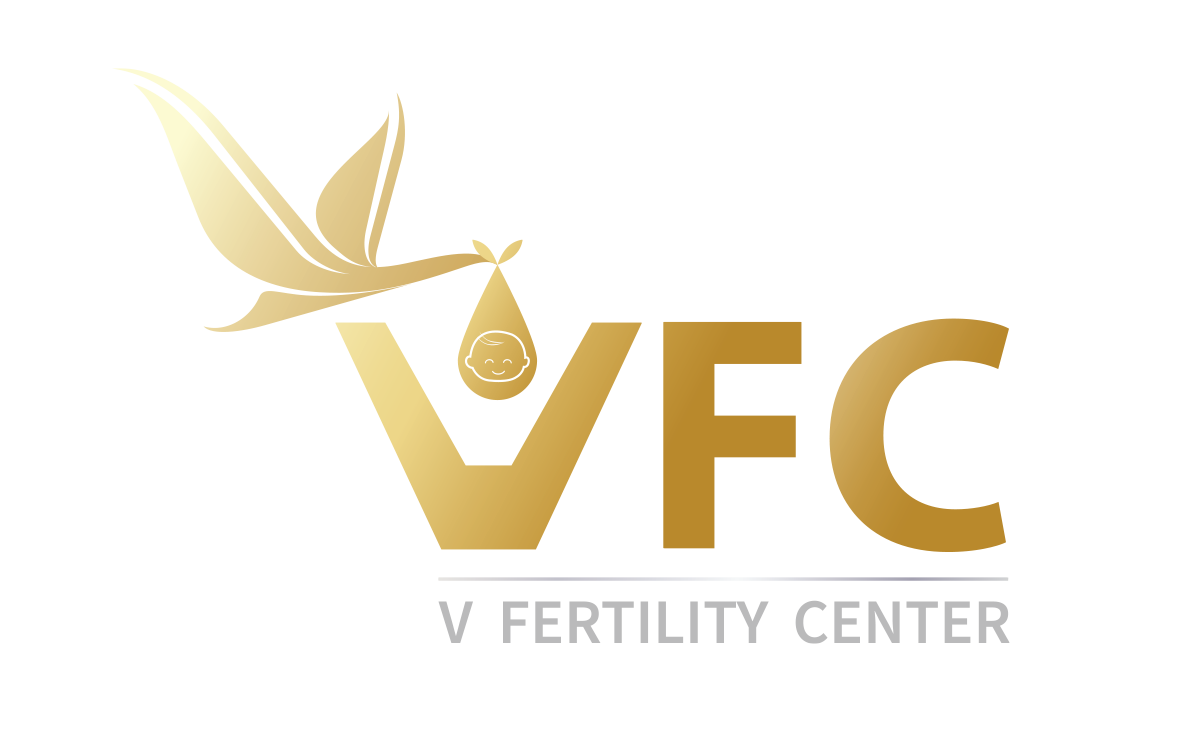
PRP ovarian rejuvenation is a procedure designed to improve fertility by stimulating the ovaries. It involves injecting a concentrated solution of a woman’s own platelets, called platelet-rich plasma (PRP), directly into the ovaries. PRP contains growth factors and proteins that may promote cellular repair and blood flow within the ovaries, potentially enhancing egg quality and overall ovarian function.
This cutting-edge technique is particularly beneficial for women experiencing diminished ovarian reserve or early menopause, offering a natural and minimally invasive option to rejuvenate ovarian health and boost reproductive potential.
Who is a Candidate for PRP Ovarian Rejuvenation?
PRP ovarian rejuvenation may be a suitable option for women experiencing fertility challenges, particularly those with:
- Diminished ovarian reserve: Women with low AMH (Anti-Müllerian Hormone) levels indicating a decreased number of eggs may benefit from PRP’s potential to stimulate follicle growth.
- Poor egg quality: If egg quality concerns exist, PRP’s growth factors might promote healthier egg development.
- Unsuccessful IVF cycles: Women who haven’t responded well to previous IVF cycles could explore PRP as a way to improve their response in future attempts.
- Early menopause or perimenopause: For women experiencing symptoms of early menopause or perimenopause, PRP might offer some relief by potentially regulating hormone levels.
It’s important to discuss your individual circumstances with a qualified fertility specialist. They can assess your suitability for PRP ovarian rejuvenation and recommend the most appropriate course of treatment based on your specific fertility goals and medical history.
The PRP Ovarian Rejuvenation Treatment Process
The PRP ovarian rejuvenation process is minimally invasive and typically involves these steps:
- Blood Draw: A small amount of blood is drawn from your arm, similar to a routine blood test.
- PRP Preparation: The blood is spun in a centrifuge, a machine that separates the different components of your blood. This process concentrates the platelets in a smaller volume of plasma, creating the PRP solution.
- Injection: Typically done using transvaginal ultrasound guidance for precision, a doctor injects the PRP directly into your ovaries. This is often done on an outpatient basis under light anesthesia.
- Recovery: Following the procedure, you’ll likely rest for a short period before going home. There’s minimal downtime, though you may experience some mild cramping or discomfort.
Preparing for PRP Ovarian Rejuvenation
Before undergoing PRP ovarian rejuvenation, you will have a comprehensive consultation with your doctor. During this time, they will discuss your medical history, fertility goals, and any medications you’re taking. They’ll also perform a physical exam and potentially order blood tests to assess your overall health and suitability for the procedure.
In some cases, your doctor might recommend stopping certain medications or supplements that could interfere with blood clotting or platelet function. Additionally, they may advise avoiding alcohol or smoking in the weeks leading up to the procedure to optimize your body’s healing response.
Recovery After PRP Ovarian Rejuvenation
PRP ovarian rejuvenation is an outpatient procedure, meaning you won’t need to stay overnight. After a brief recovery period at the clinic, you can typically return home with a friend or family member for support.
Recovery is generally quick. You might experience some mild cramping or discomfort in the pelvic area, similar to menstrual cramps. Over-the-counter pain medication can usually manage these side effects. Your doctor will likely recommend avoiding strenuous activity for a few days and recommend any specific post-procedural care instructions.
It’s important to remember that the effects of PRP ovarian rejuvenation may take time to become apparent. Your doctor will monitor your progress with blood tests and ultrasounds in the following months to assess hormone levels and potential improvement in ovarian function.
Expected Outcomes of PRP Ovarian Rejuvenation
The potential outcomes of PRP ovarian rejuvenation at Vejthani Hospital in Bangkok are promising, but it’s important to have realistic expectations. Research suggests that PRP may improve various fertility markers, including:
- Increased ovarian reserve: PRP may stimulate the growth of follicles, the small sacs within the ovaries that contain eggs. This could lead to an increase in Anti-Müllerian Hormone (AMH) levels, a marker of ovarian reserve.
- Improved egg quality: The growth factors in PRP may promote healthier egg development, potentially leading to a higher chance of successful fertilization and pregnancy.
- Enhanced response to IVF: For women undergoing In Vitro Fertilization (IVF), PRP could potentially improve the number of eggs retrieved and the quality of embryos formed, leading to better IVF outcomes.
However, it’s crucial to note that PRP ovarian rejuvenation is a relatively new procedure, and long-term data on its effectiveness is still limited. More research is needed to confirm its benefits and determine the optimal treatment protocols.
Possible Complications
While generally considered safe, PRP ovarian rejuvenation does carry some potential risks, similar to any medical procedure. These risks are typically minor and may include:
- Infection: There’s a slight chance of infection at the injection site or within the ovaries, though proper sterilization techniques significantly reduce this risk.
- Pain and Discomfort: You might experience mild cramping or discomfort in the pelvic area following the procedure, manageable with pain medication.
- Bleeding or Bruising: Minimal bleeding or bruising may occur at the injection site, but this usually resolves quickly.
- Allergic Reaction: In rare cases, an allergic reaction to the PRP or the anesthetic used during the procedure can occur.
PRP with Other Fertility Treatments
PRP ovarian rejuvenation sometimes works best when it is part of a more extensive fertility strategy. It can be combined with other fertility treatments like IVF or IUI to potentially increase your chances of getting pregnant. To determine if PRP is right for you and explore the best course of action, consult our fertility experts.
Make The VFC Center Your Go-To for Fertility Care
If you are considering a PRP ovarian rejuvenation treatment in Thailand, visit Vejthani Hospital’s VFC Center in Bangkok to take the first step towards parenthood. Our team of fertility specialists understands the unique challenges of each patient’s journey.
We pride ourselves on our state-of-the-art facilities and expert team of specialists who are at the forefront of fertility science in Thailand. With our patient-centric approach, we offer customized treatment plans tailored to individual needs and unique conditions, resulting in an impressive 88.6% success rate and countless success stories from our various fertility treatments. Moreover, the cost of PRP ovarian rejuvenation in Thailand is often more affordable than in other countries, without compromising on quality or success rates.
PRP ovarian rejuvenation gives many couples hope of achieving their dream of having a child. Let’s discuss how PRP ovarian rejuvenation can be part of your fertility story. Contact us today for a consultation.
PRP Ovarian Rejuvenation FAQs
- What is the success rate of PRP ovarian rejuvenation?
PRP ovarian rejuvenation is a relatively new procedure, and long-term data on its success rates is still limited. Research suggests it may improve fertility markers by 70% to 80%, but more studies are needed to confirm definitive success rates.
- Does PRP improve egg quality?
Early research shows promise. PRP contains growth factors that may promote healthier egg development, potentially leading to improved egg quality.
- How long does ovarian PRP last?
Ideally, the effect of PRP lasts approximately 2 to 3 months. If you would like to have IVF procedures, it is best to do the PRP treatment one to two months prior. If your doctor recommends a Clomid cycle, combined treatment with IVF, or a natural cycle, the dosage of the medication might vary based on your evaluation.
- Can PRP increase the AMH level?
AMH (Anti-Müllerian Hormone) is a marker of ovarian reserve. Some studies suggest PRP may stimulate follicle growth, and AMH levels might significantly increase after every month. For instance, one month after the PRP treatment, the AMH level might be 0.20 ng/ml higher than the baseline level, which is valued at (p < 0.001, 95% CI: [0.12;0.28]).
- What is the age limit for PRP ovarian rejuvenation?
There isn’t a specific age limit for PRP ovarian rejuvenation. However, it’s generally considered most suitable for women with diminished ovarian reserve, often experienced in the late 30s and early 40s. Consulting a fertility specialist is crucial to determine if PRP is right for you based on your individual circumstances.

The team of specialists in obstetrics and gynecology and reproductive medicine





No Comments
Sorry, the comment form is closed at this time.